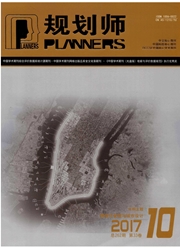

 中文摘要:
中文摘要:
老龄化已成为发达国家和地区的重要人口结构特征,各地区的养老模式因发展背景不同而不同,新加坡的养老设施模式属于政府主导型,美国的养老设施模式属于市场主导型,我国香港地区的养老模式属于政府引导型,且三地的养老模式在居家养老、社区养老和机构养老三个层面的内容也有所不同。由此,研究总结出为老年人提供多层次、多目标的养老设施及服务体系是应对老龄化问题的成功经验,基于我国应对人口老龄化的发展战略和目标,提出“差异化、多元化、渐进式”的“居家一社区一机构”养老设施发展政策,并制定相应的养老设施用地类型、空间布局和控制方式的规划指引。
 英文摘要:
英文摘要:
The aging of population is becoming an important character of developed countries and regions. In Singapore, the government is responsible for the senior infrastructure construction. In the United States, market force is dominant. In Hong Kong, the govemment guides senior infrastructure development. Retirement homes, communities, and agencies are also different in the three cases. The paper manifests that multiple and diversified senior facilities and services is a successful experience, and raises diversified, multiple, and progressive "home-community-agency" senior facilities development policy, and makes correspondent plans in land use, spatial layout, and control measures.
 同期刊论文项目
同期刊论文项目
 同项目期刊论文
同项目期刊论文
 期刊信息
期刊信息
